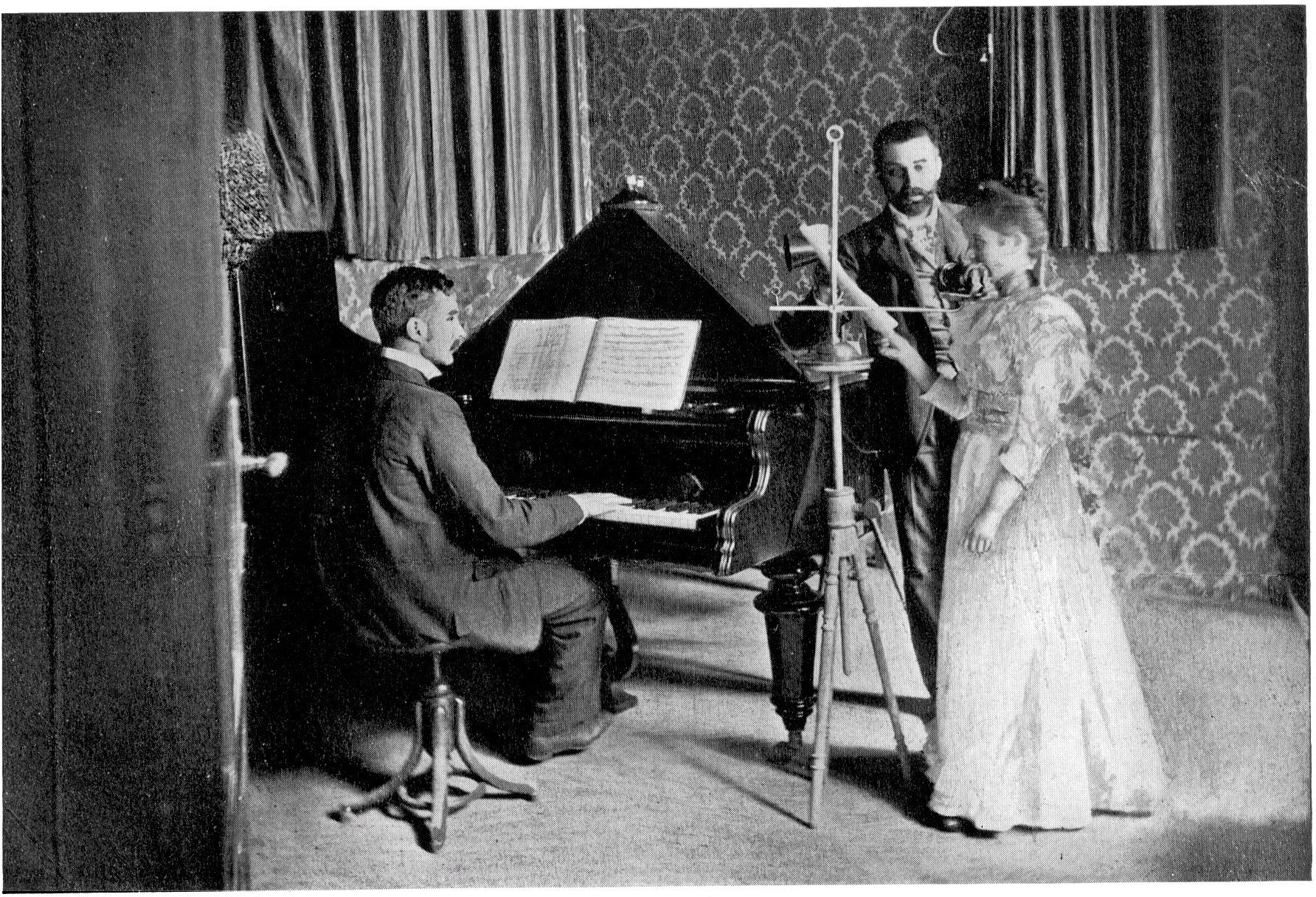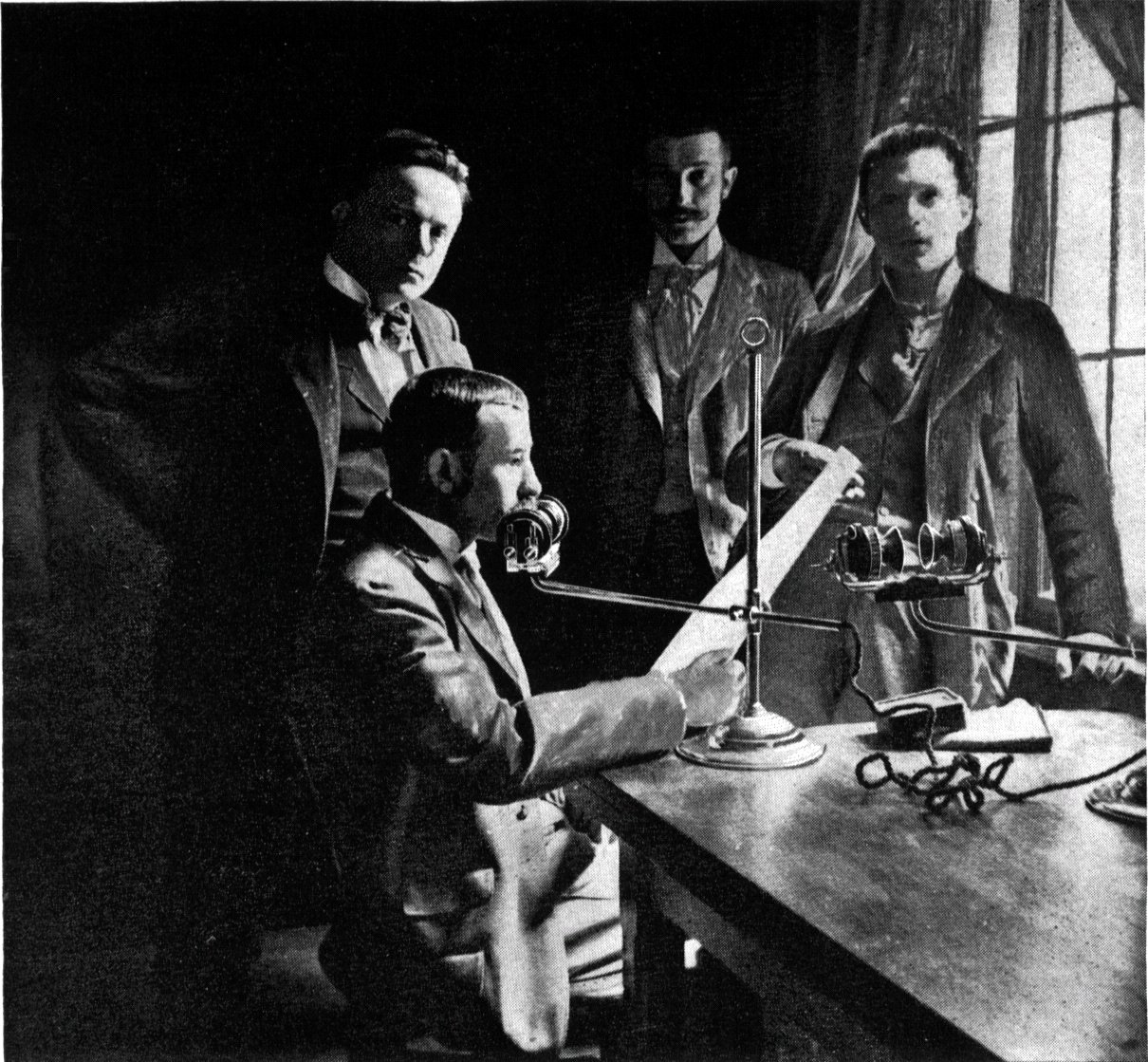These classic 1901 photographs show the Budapest offices of Telefon Hirmondo (or Telephone Herald), a newspaper service read via telephone to subscribers all over that city. Begun in 1893 by Transylvanian inventor Theodore Puskas–who died just a month after the service was launched–the Herald featured updated news all day and live music at night. It cost about two cents a day at the outset. At its height, the company had more than 15,000 subscribers and licensed similar setups in Italy and America. Local department stores, hotels and restaurants purchased several lines so that their customers could be hooked into flowing news and entertainment almost a century before Wi-Fi. The popularity of radio in the 1920s, however, made the telephone newspaper superfluous.
From an article about the U.S. iteration (in Newark, New Jersey) in the March 30, 1912 edition of Telephony:
While all the rest of the nation had to stop work and hang around the newspaper bulletin boards waiting in an agony of suspense for news from the Polo Grounds, in New York, last October, for half an hour, or perhaps thirty-three minutes, after the epoch-making innings there were ended, a privileged few in Newark, N. J., were able, while sitting in their own homes, to follow instantaneously, play by play, the demonstration of the fact that the Giants were next to the best baseball experts. These Newark folk who received news more promptly than that commodity had ever before been served in America were the first subscribers to the Telephone Herald, a newspaper which is independent of the Typographical Union and the Allied Printing Trades Council, for it is published over wires instead of upon paper. In other words, the subscriber does not read the Telephone Herald, but merely listens to it. He may listen to as much or as little of it as he likes; but whether he listens or not the Herald grinds on in one continuous edition from 8 o’clock in the morning until 10:30 o’clock in the evening. Its news is constantly on tap, like water or gas, for the small sum of $18 a year, or five cents a day. Additional news taps in one house are installed for $7 a year, or two cents a day. The Telephone Herald gets out a Sunday paper seven days a week with all the usual ‘magazine’ features, fiction, fashions, children’s stories and all the rest of it. Its one redeeming feature is that it has no comic supplement, thank Heaven!
In the evening the Herald ceases to be a newspaper and becomes an entertainer, furnishing a varied programme of instrumental music, songs, recitals, lectures or anything else that can be transmitted by wire.
While the telephone newspaper is a novelty on this side of the Atlantic one has been published regularly for eighteen years at Budapest, Hungary, under the name of Telefon Hirmondo.•

The schedule for the Newark version:
- 8:00: Exact astronomical time.
- 8:00-9:00: Weather, late telegrams, London exchange quotations; chief items of interest from the morning papers.
- 9:00-9:45: Special sales at the various stores; social programs for the day.
- 9:45-10:00: Local personals and small items.
- 10:00-11:30: New York Stock Exchange quotations and market letter.
- 11:30-12:00: New York miscellaneous items.
- Noon: Exact astronomical time.
- 12:00-12:30: Latest general news;naval, military and congressional notes.
- 12:30-1:00: Midday New York Stock Exchange quotations.
- 1:00-2:00: Repetition of the half day’s most interesting news.
- 2:00-2:15: Foreign cable dispatches.
- 2:15-2:30: Trenton and Washington items.
- 2:30-2:45: Fashion notes and household hints.
- 2:45-3:15: Sporting news; theatrical news.
- 3:15-3:30: New York Stock Exchange closing quotations.
- 3:30-5:00: Music, readings, lectures.
- 5:00-6:00: Stories and talks for the children.
- 8:00-10:30: Vaudeville, concert, opera.

